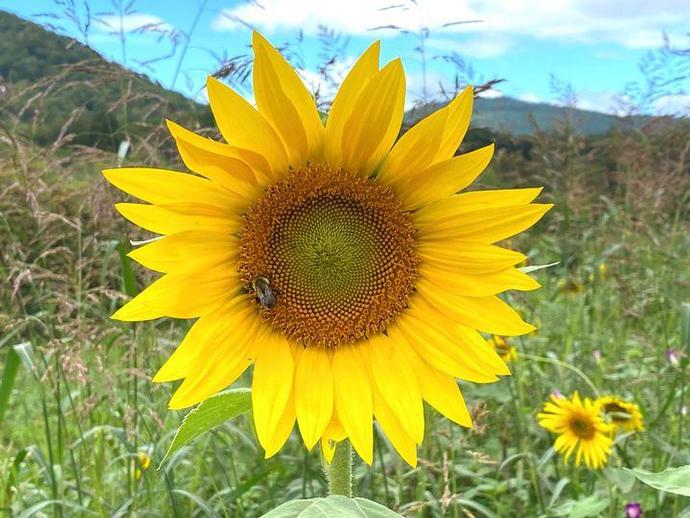October 13, 2021
Ben here with the Wednesday edition of #BenInNature presented by our friends at Carter Bank & Trust!
Here's another photo from my weekend apple-picking excursion: Helianthus annuus, better known as the common sunflower! There's also a bonus bumblebee, but we'll get to that later.
When we see a sunflower in bloom, we generally think of the head as one big flower. In fact, the head is what's known as a "pseudanthium," which is a plant structure that only resembles a flower. The actual flowers are the tiny, five-petaled florets in the center of the pseudanthium, also known as "disk flowers." These flowers mature into sunflower seeds.
Sunflowers are grown both as ornamentals and also as an important agricultural crop. Sunflower seeds are tasty on their own, but they can also be used to make sunflower oil, which is used as a cooking oil, and also in the production of margarine and biodiesel.
There's a long-held belief that the heads of sunflowers track the sun as it moves across the sky. However, this is not quite true; immature flower buds will exhibit this behavior, but the mature heads point in a fixed direction. They generally point to the east, and the fact that the heads usually all face the same direction may have given rise to the myth that they track the sun.
ABOUT #BenInNature
Social distancing can be difficult, but it presents a great opportunity to become reacquainted with nature. In this series of posts, Administrator of Science Ben Williams ventures outdoors to record a snapshot of the unique sights that can be found in the natural world. New updates are posted Monday - Friday, with previous posts highlighted on the weekends. This series of posts is made possible thanks to the support of VMNH Corporate Partner Carter Bank & Trust (www.cbtcares.com).
NATURE PHOTO IDENTIFICATIONS
If you discover something in nature that you would like help identifying, be sure to message us right here on Facebook with a picture (please include location and date of picture) and we'll have our experts help you identify it!

 Hours & Admissions
Hours & Admissions Directions
Directions

